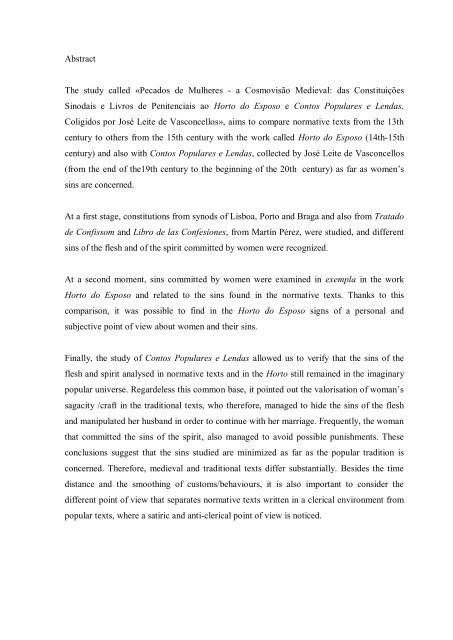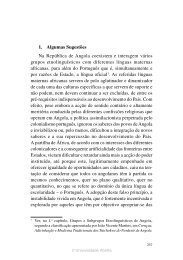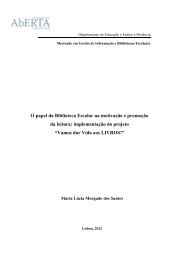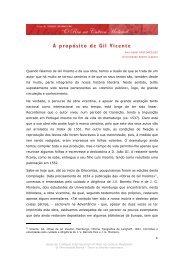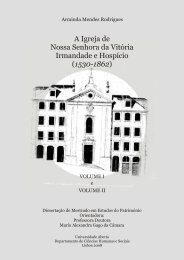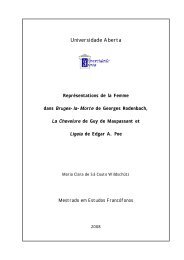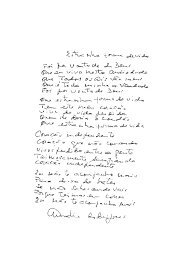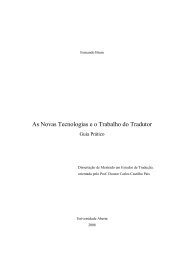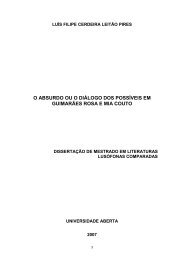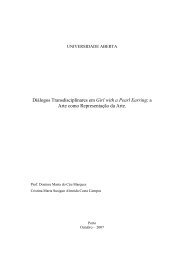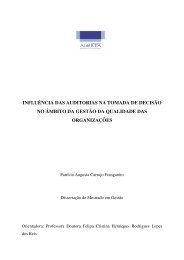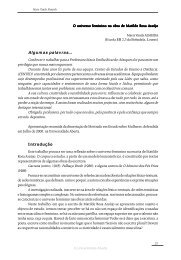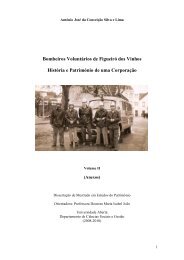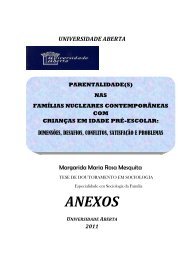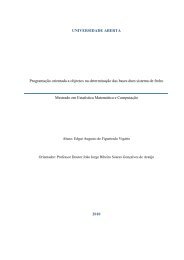B. Horto do Esposo - Universidade Aberta
B. Horto do Esposo - Universidade Aberta
B. Horto do Esposo - Universidade Aberta
Create successful ePaper yourself
Turn your PDF publications into a flip-book with our unique Google optimized e-Paper software.
Abstract<br />
The study called «Peca<strong>do</strong>s de Mulheres - a Cosmovisão Medieval: das Constituições<br />
Sinodais e Livros de Penitenciais ao <strong>Horto</strong> <strong>do</strong> <strong>Esposo</strong> e Contos Populares e Lendas,<br />
Coligi<strong>do</strong>s por José Leite de Vasconcellos», aims to compare normative texts from the 13th<br />
century to others from the 15th century with the work called <strong>Horto</strong> <strong>do</strong> <strong>Esposo</strong> (14th-15th<br />
century) and also with Contos Populares e Lendas, collected by José Leite de Vasconcellos<br />
(from the end of the19th century to the beginning of the 20th century) as far as women’s<br />
sins are concerned.<br />
At a first stage, constitutions from synods of Lisboa, Porto and Braga and also from Trata<strong>do</strong><br />
de Confissom and Libro de las Confesiones, from Martín Pérez, were studied, and different<br />
sins of the flesh and of the spirit committed by women were recognized.<br />
At a second moment, sins committed by women were examined in exempla in the work<br />
<strong>Horto</strong> <strong>do</strong> <strong>Esposo</strong> and related to the sins found in the normative texts. Thanks to this<br />
comparison, it was possible to find in the <strong>Horto</strong> <strong>do</strong> <strong>Esposo</strong> signs of a personal and<br />
subjective point of view about women and their sins.<br />
Finally, the study of Contos Populares e Lendas allowed us to verify that the sins of the<br />
flesh and spirit analysed in normative texts and in the <strong>Horto</strong> still remained in the imaginary<br />
popular universe. Regardeless this common base, it pointed out the valorisation of woman’s<br />
sagacity /craft in the traditional texts, who therefore, managed to hide the sins of the flesh<br />
and manipulated her husband in order to continue with her marriage. Frequently, the woman<br />
that committed the sins of the spirit, also managed to avoid possible punishments. These<br />
conclusions suggest that the sins studied are minimized as far as the popular tradition is<br />
concerned. Therefore, medieval and traditional texts differ substantially. Besides the time<br />
distance and the smoothing of customs/behaviours, it is also important to consider the<br />
different point of view that separates normative texts written in a clerical environment from<br />
popular texts, where a satiric and anti-clerical point of view is noticed.


